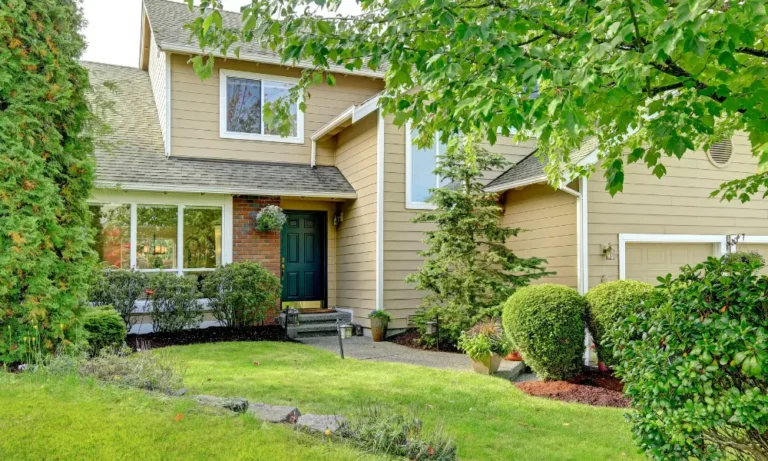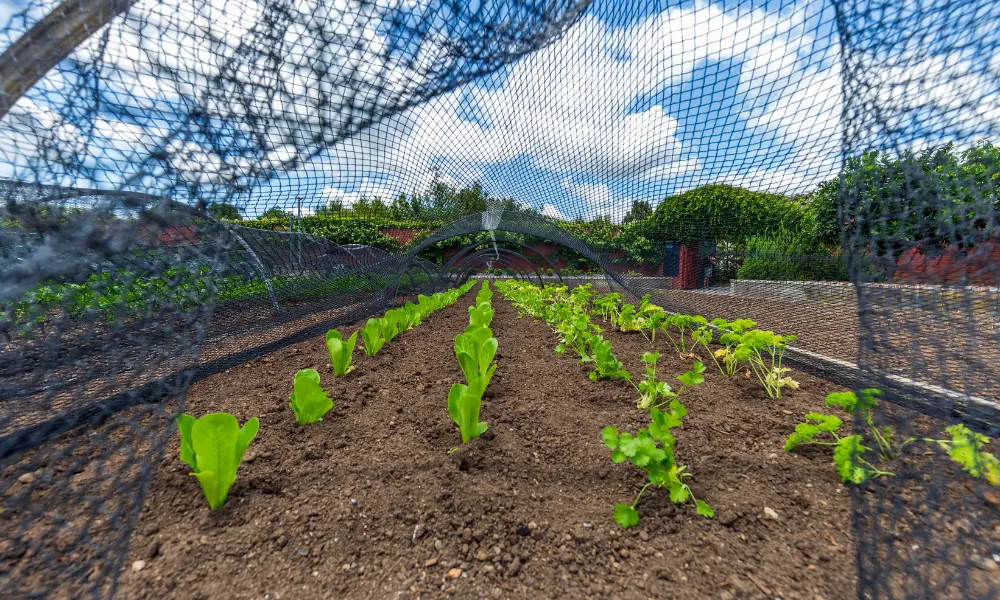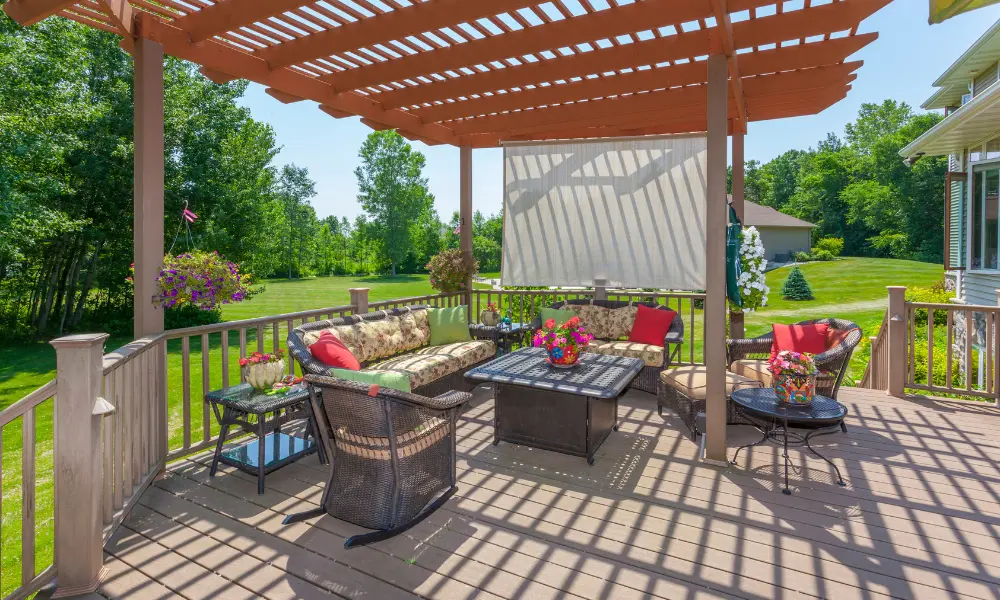Minimal landscape design is an artful approach that celebrates simplicity, clean lines, and the art of “less is more.” This design style strips away the excess, leaving behind a serene, harmonious outdoor space that emphasizes essential elements and the beauty of open spaces. In this guide, we’ll explore the principles and key elements of minimal landscape design, guiding you on the path to creating a tranquil and elegant outdoor haven.
The craft lies in methodically selecting and arranging elements, minimizing intricacy, and allowing simplicity to resound on its own accord.
In matters concerning simplicity within landscaping, it often proves true that less holds more sway. Stripping away excessive ornamentation in favor of clean lines and minimalistic features bestows upon one a sense of tranquility akin to still waters.
By concentrating on essential elements while discarding superfluous clutter, a magnetic aura envelops the space; beckoning guests with visual appeal unparalleled. Elemental choices like employing a restricted color palette or incorporating natural materials serve as potent enhancers for overall aesthetic balance – thus fashioning an inviting haven within our outdoor realm.
Within the sphere governed by simplicity dwells a transformative way of life embodied through landscaping. It is about embracing the beauty inherent in minimalism; cherishing its alluring philosophy where scarcity reigns supreme over abundance.
Through infusing our outdoor spaces with simplicity\’s essence we may encounter not only peace but also profound communion with nature herself – fostering harmony between manmade structures and their verdant backdrop. Ultimately these harmonious sanctuaries offer solace for relaxation and rejuvenation: encapsulating what it means to embrace simplicity within landscaping\’s embrace
Thoughtful Plant Selection
In a minimal landscape, plant selection is deliberate and restrained. Choose a limited palette of plants that require little maintenance and have a refined aesthetic. Plants like grasses, succulents, and Japanese maples are excellent choices for their simplicity and sculptural qualities.
The foundation of a minimal landscape is clean lines and geometric shapes. Straight pathways, square planters, and rectangular lawn areas create a sense of order and simplicity. Avoid clutter and excessive ornamentation in favor of well-defined forms.
A muted and neutral color palette is characteristic of minimal landscape design. Shades of gray, beige, white, and green dominate, creating a soothing and timeless ambiance. Use these colors for hardscape materials, such as concrete, gravel, and stone.
Hardscape elements, such as walkways, patios, and seating areas, serve both functional and aesthetic purposes in a minimal landscape. Use materials like smooth concrete, natural stone, or hardwood to create inviting and low-maintenance outdoor spaces.
Pruning and shaping plants are crucial aspects of minimal landscape design. Trim shrubs and trees into clean, well-defined shapes, such as spheres or cones. This meticulous care ensures that your greenery remains an intentional part of the overall design.
Minimalism often aligns with sustainability. Consider incorporating environmentally friendly features such as rain gardens, drought-tolerant plants, and smart irrigation systems to reduce water usage and maintenance requirements.
Exploring the Beauty of a Simplified Outdoor Space
When it comes to outdoor spaces, simplicity becomes the key that unlocks a truly mesmerizing and enigmatic area. A simplified outdoor space fully embraces the essence of minimalism, focusing solely on the most vital elements while banishing any superfluous clutter. This design approach not only enhances the overall visual appeal but also cultivates an atmosphere of tranquility and unity within the space.
In a world of simplification, clean lines reign supreme, open areas breathe freely, and a limited color palette graces every corner. By thoughtfully selecting just a few pieces of furniture and decor—a sleek dining set or perhaps a cozy seating arrangement—you can effortlessly conjure up an aura of spaciousness and serenity.
The strategic use of lighting is equally paramount in accentuating the beauty found within this simplified oasis. Subtle yet alluring illumination caresses each essential element, maintaining its unadorned allure while creating an inviting warmth. The ultimate goal lies in achieving an exquisite equilibrium between practicality and aesthetics: where every item dutifully serves its purpose, contributing harmoniously to the overarching splendor of this sacred space.
Key Elements for Creating a Minimal Landscape
When delving into the realm of crafting a minimal landscape, one must delve deep into the enigmatic intricacies that lie within. One\’s mind must be perplexed with thoughts of simplicity and order. For this is the essence of a minimalist landscape – an ethereal symphony composed of sleek lines, unburdened spaces, and a delicate equilibrium. Lofty ambitions indeed.
Yet as we embark on this artistic journey, we must not succumb to the temptation of complexity. Oh no! We must resist the allure of superfluous details and unnecessary embellishments that threaten to mar our creation. Keep it simple, dear soul! Let us avoid overcomplicating matters and embrace the beauty in its purest form.
Ah yes, space…the very fabric upon which our masterpiece shall unfold. In this world we seek to create, maximizing every inch becomes paramount; nay crucial! The meticulous planning and organization will pave way for functionality and purpose in our outdoor realm. By carefully selecting where each element takes its rightful place – seating here, pathways there, plants scattered gracefully – we can seize control over space itself! Thus transforming it into an oasis both visually pleasing and practically efficient.
But let us not forget that openness holds great power too! For within these vast expanses lies tranquility waiting to be harnessed; calmness yet untapped by mortal hands. So let your design breathe freely like a gentle zephyr caressing nature\’s canvas. Embrace spaciousness wholeheartedly!
Now go forth dear reader armed with knowledge so profound even angels would quiver at its mention. Unleash your creativity upon barren lands until they blossom under your tender touch – for you are now well-versed in the artistry that is minimalist landscaping.
Maximizing Space: Tips for Designing a Minimalist Garden
When it comes to the perplexing task of designing a minimalist garden, the utmost goal is to achieve maximum utilization of the available space. By engaging in meticulous and strategic planning, one can manifest a garden that exudes an air of spaciousness, cleanliness, and lack of clutter.
One initial piece of advice for capitalizing on space within a minimalist garden is to prioritize functionality above all else. Ponder upon how you intend to employ this area and concentrate on integrating elements that serve practical purposes.
Instead of scattering multiple seating areas throughout the garden, opt for one meticulously crafted seating arrangement that caters to manifold functions. Similarly, choose compact furniture pieces that possess the ability to effortlessly fold or be concealed when not in use; thereby liberating additional room for movement amidst this artistic haven.
Selecting the Right Plants for a Minimal Landscape Design
In the realm of Minimal landscape design, simplicity reigns supreme. The ultimate goal in crafting a minimalist garden is to achieve an uncluttered and pristine appearance, with functionality and low maintenance as guiding principles. To accomplish this aesthetic vision, it is crucial to carefully select plants that possess a straightforward and streamlined allure.
When making choices regarding plant selection for a minimal landscape, one must take into account factors such as size, shape, and overall form. Seek out plants whose growth habits are clean-cut and well-structured—think towering grasses or erect shrubs.
These particular specimens not only contribute height and structure to the garden but also boast straight lines and clearly defined shapes that align harmoniously with the overarching minimalist style. Moreover, consider opting for plants adorned with foliage that exudes uniformity and simplicity; those boasting sleek narrow leaves or symmetrical patterns fit the bill perfectly. By embracing flora endowed with these qualities, you can fashion an atmosphere of orderliness and equilibrium within your minimal landscape design.
Incorporating Natural Materials into Your Minimalist Landscape
Incorporating natural materials into your design is a key aspect of creating a minimal landscape. The perplexing allure of these materials not only adds an authentic and harmonious touch to your outdoor space, but it also contributes to the overall aesthetic appeal in bursts. By utilizing stone, wood, and gravel, you can achieve a simple yet elegant look that perfectly complements the surrounding environment.
When it comes to selecting natural materials for your minimal landscape, their durability and longevity should be at the forefront of your mind. Opt for high-quality materials that are capable of withstanding the elements while requiring minimal maintenance.
For instance, opting for natural stone pathways or retaining walls not only imbues your outdoor space with timeless beauty but also guarantees their long-lasting existence. Similarly, incorporating wooden elements such as benches or pergolas enlivens the atmosphere with warmth and invitation while seamlessly blending nature into your minimalist design approach
Achieving Balance and Harmony in Minimal Landscaping
In the realm of minimalist landscaping, a paramount essence lies in attaining an enigmatic equilibrium and harmonious convergence within the expanse of the great outdoors. Such an achievement is brought about through the meticulous selection and arrangement of various constituents.
One efficacious approach to engender balance involves harnessing symmetry as a design element. By situating identical entities or features on either side of a central axis, one can imbue the landscape with an alluring sense of equipoise. For instance, envisage placing two matching planters or sculptures on opposite sides of a thoroughfare or entrance.
Another technique that begets balance entails adroitly employing color and texture as artistic tools. By limiting oneself to a carefully chosen color palette while simultaneously incorporating plants boasting diverse textures, one has at their disposal the means to forge a visually coherent milieu. An exemplary notion might involve pairing tender, feathery grasses alongside smooth pebbled pathways; such juxtaposition bestows upon the environment not only captivating contrast but also preserves its inherent simplicity.
At its core, achieving harmony and equilibrium within a minimal landscape necessitates fastidious planning coupled with unflagging attention to detail. Through discerningly contemplating element arrangement, adroit utilization of symmetry, and judicious allocation of colors and textures in tandem one can fashion an aesthetically pleasing haven suffused with serenity for outdoor enthusiasts seeking respite from life\’s tumultuous tapestry.\\n
Enhancing Privacy and Tranquility in a Minimal Outdoor Space
The enigmatic essence of a minimalist outdoor space lies in its perplexing ability to manifest privacy and tranquility. Though the concept of minimalism often conjures images of expansive openness, it is crucial to strike a harmonious equilibrium between simplicity and the human desire for personal space. The artful utilization of natural elements and deliberate placement of barriers can contribute to an atmosphere imbued with serenity while safeguarding one\’s seclusion.
To augment privacy within a minimalist outdoor realm, contemplate integrating features such as towering hedges or bamboo screens. These organic partitions bestow an air of seclusion without compromising the fundamental simplicity ingrained within the overall design scheme.
Furthermore, employing translucent materials like frosted glass or architectural panels for dividers can offer both privacy and the ethereal permeation of light. By meticulously selecting and positioning these vital components, you have the power to forge a tranquil haven wherein you may luxuriate in uninterrupted solitude.
Maintenance and Care for a Minimal Landscape
The perplexing task of tending to a minimal landscape demands an unwavering dedication to upkeep. The enigmatic beauty of the space hinges on meticulous maintenance, leaving no room for negligence. A paramount facet of this undertaking lies in the artful care and pruning of each plant, ensuring that they remain trim and compact, their unruly branches effortlessly excised.
- Regularly prune plants to keep them trim and compact
- Remove fallen leaves and debris to maintain cleanliness
- Engage in simple tasks like sweeping or raking to preserve the well-ordered ambiance
Moreover, one mustn\’t overlook the burstiness inherent in maintaining an immaculate outdoor haven. A vigilance towards cleanliness becomes imperative as leaves cascade earthward and debris litters the pristine garden beds.
By diligently removing these wayward remnants, one not only amplifies its visual allure but also averts any potential perils that may lurk beneath nature\’s detritus. Engaging in simple tasks such as sweeping or raking is thus instrumental in preserving the bewilderingly well-ordered ambiance intrinsic to a minimalist landscape.
Inspiring Examples of Minimal Landscapes for Your Home
1) In the realm of outdoor aesthetics, a minimal landscape possesses an enigmatic power to induce feelings of serenity and tranquility. Through the artful reduction of complexities, embracing clean lines and open spaces, one can effortlessly achieve a captivating appearance that emanates modernity while extending an invitation.
A truly awe-inspiring manifestation of this aesthetic lies in the Zen garden – a harmonious creation inspired by Japanese design principles. This exquisite masterpiece employs minimalistic components such as rocks, gravel, and meticulously positioned foliage to craft an environment that exudes peace and tranquility. The sheer simplicity of its design engenders a focused atmosphere conducive to meditation; it is here that solace can be found amidst nature\’s embrace.
2) Another embodiment of minimalist landscaping brilliance reveals itself through the courtyard garden – where ingenuity maximizes space utilization while maintaining an uncluttered elegance. Within your very own backyard oasis emerges this remarkable terrain – adorned with straightforward paved surfaces graced by select flora and perhaps accentuated with a water feature or sculpture serving as its focal point.
The outcome is nothing short of extraordinary: a small yet profoundly impactful exterior sanctuary imbued with openness and warmth. By making astute choices in design elements and unwaveringly adhering to simplicity\’s creed, one holds within their grasp the power to metamorphose their home\’s landscape into an awe-inspiring testament to minimalism\’s grandeur.
What does minimalist landscaping entail?
The enigmatic realm of minimalist landscaping delves into the intricacies of simplicity, employing clean lines and a restrained use of embellishments in outdoor spaces. Its purpose lies in crafting an atmosphere that exudes serenity and uncluttered tranquility.
Why should I contemplate adopting minimalist landscaping for my abode?
Embarking upon the path of minimalist landscaping bestows numerous advantages, including an immersive sense of calmness, heightened visual allure, simplified maintenance, and the ability to maximize spatial utilization. Furthermore, it fosters a harmonious bond between interior and exterior realms.
What are the fundamental constituents that contribute to constructing a minimal landscape?
Delving into the heart of minimal landscape design principles unravels elements such as simplicity itself, pristine lines brimming with purity, a restricted color palette reminiscent of nature\’s own hues, an emphasis on natural materials hailing from Earth\’s bounty, and judicious employment of negative space. These components synergize beautifully to forge visually captivating yet balanced open-air sanctuaries.
How can I optimize limited space within my minimal garden?
To unlock the full potential harbored within your modest garden oasis while adhering to minimalistic ideals entails pondering upon multifunctional furnishings capable of metamorphosing their utility at will; harnessing vertical expanses by introducing trellises or suspended planters; selecting diminutive flora varieties; and placing elements strategically to cultivate an ambiance replete with openness.
Which types of plants lend themselves well to a minimal landscape design?
Plants that find solace amidst minimal landscapes typically embody low-maintenance qualities while embracing an aesthetic characterized by elegance through understatement. Examples include ornamental grasses swaying gracefully in gentle breezes, succulents exhibiting timeless allure,sprightly evergreen shrubs gracing open vistas,and foliage-deficient or flower-sparse specimens.
How can I seamlessly incorporate natural materials into my minimalist haven?
Inducing an organic essence within your minimalist sanctuary necessitates the artful integration of nature\’s own gifts, be it stoic stones, resplendent wood, gravel reminiscent of ancient paths trodden by time itself, or bamboo echoing the whispers of a distant forest. These tactile elements find their purpose as pathways inviting exploration and contemplation, seating arrangements beckoning restful repose, vessels for nurturing flora that blossom with life\’s vibrance,and decorative accents lending texture and warmth to outdoor realms.
How can I forge equilibrium and unity in the realm of minimalist landscaping?
To achieve perfect harmony while traversing minimalism\’s verdant realm entails navigating through symmetrical or asymmetrical compositions infused with thoughtful intent that culminate in focal points capturing attention. Consistency in aesthetic appeal and color palettes further solidifies the immersive experience where balance reigns supreme.
What techniques can enhance privacy and serenity within my minimalist outdoor expanse?
Cultivating an environment brimming with solitude and tranquility amidst your simplistic open-air sanctuary involves employing strategically positioned partitions safeguarding personal space from prying eyes; vying verdant sentinels standing tall to shield against external disturbances; or discreet walls that embrace subtlety at low heights. Additionally,the inclusion of water features such as modest fountains embodying minimalistic beauty or reflective pools mirroring quietude contribute significantly towards fostering a serene ambience.
What measures are necessary for maintaining a minimal landscape?
Achieving Zen-like bliss embodied within a simple yet sophisticated minimal landscape generally requires less upkeep than its more elaborate counterparts.However,routine care encompasses pruning plants,diligently removing intruding weeds,preserving pristine pathways,and guaranteeing proper drainage.Periodically assessing one\’s overall design is also crucial,enabling adjustments as needed on this captivating journey.
Could you inspire me with examples of minimal landscapes suitable for my dwelling?
While this text-based medium cannot provide tailored exemplars,unraveling the enigma of minimalist landscaping can be accomplished by immersing oneself in a diverse array of online resources,browsing through design publications or seeking guidance from skilled landscapers specializing in the artistry of minimalistic designs.
Regular Maintenance
Maintaining a minimal landscape is relatively straightforward but essential. Prune plants as needed, keep pathways clear, and ensure that the design’s simplicity remains intact by removing any superfluous elements that may arise.
In conclusion, a minimal landscape is a testament to the power of simplicity in outdoor design. By adhering to the principles of restraint, clean lines, and functional elegance, you can craft an outdoor space that exudes tranquility and sophistication. Embrace the beauty of less, and let your minimal landscape become a serene retreat that offers respite from the complexity of the modern world.
Summary
In the realm of landscaping, the concept of a minimal landscape holds a special allure. It’s all about creating an outdoor space that’s not overwhelmed by embellishments and complexities. Instead, it seeks to embrace the elegance of simplicity. Let’s delve into the world of minimal landscapes and explore how you can achieve this serene aesthetic.
When designing a minimal landscape, the choice of plants plays a pivotal role. Opt for species that are inherently unassuming yet visually striking. Native grasses, such as switchgrass or little bluestem, are excellent choices. Their graceful sway in the breeze adds a touch of natural poetry to the space.
The hallmark of a minimal landscape is clean lines and geometric shapes. Create well-defined paths using materials like gravel or pavers. Straight-edged lawns and simple, symmetrical flower beds provide structure without overwhelming the eye.
Embrace a restrained color palette. Shades of green, white, and muted earth tones dominate a minimal landscape. This limited color scheme creates a harmonious and tranquil ambiance. Consider plants like boxwood, hostas, or lavender to maintain this subdued color harmony.
In a minimal landscape, negative space is as important as the elements you choose to include. Allow for areas of open ground or gravel, strategically placed to balance the overall composition. These empty spaces create a sense of calm and order.
Incorporate functional elements that serve a dual purpose. A minimal landscape often integrates seating areas, fire pits, or water features that not only enhance the aesthetic but also provide utility. Simplicity doesn’t mean sacrificing comfort.
Use natural materials like stone, wood, and metal to accentuate the minimalistic vibe. Weathered wooden benches, large stone slabs for pathways, or rusted steel sculptures can add an intriguing rustic charm to the landscape.
Regular pruning and maintenance are essential in a minimal landscape. Keep plants well-trimmed and hedges neatly pruned to maintain the clean and uncluttered appearance. This attention to detail is integral to the overall aesthetic.
Subtle lighting can transform your minimal landscape after sunset. Opt for soft, warm-toned lights that highlight key features and create an inviting atmosphere. Illuminating pathways and focal points adds depth and interest.
Consider incorporating a simple water feature like a small pond or a reflective pool. The gentle sound of water and its mirror-like surface can evoke a sense of serenity, enhancing the tranquility of your minimal landscape.
Minimalism often aligns with sustainability. Choose drought-resistant plants and employ efficient irrigation methods to reduce water consumption. Embrace the idea of a minimal landscape that’s not just visually appealing but environmentally responsible.
In summary, a minimal landscape embodies the art of less-is-more, where every element is carefully chosen to create a serene and harmonious outdoor space. By embracing simplicity in your plant selection, design, and maintenance, you can craft a landscape that exudes understated beauty and timeless elegance.




